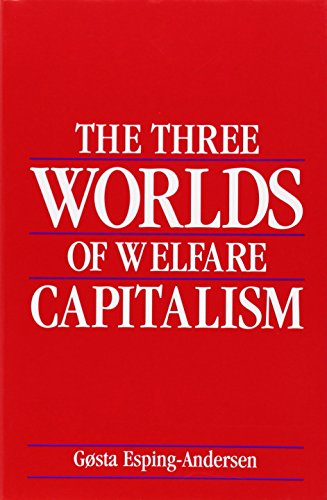The Three Worlds of Welfare Capitalism download
Par taylor barbara le mercredi, janvier 18 2017, 11:08 - Lien permanent
The Three Worlds of Welfare Capitalism. Gosta Esping-Andersen

The.Three.Worlds.of.Welfare.Capitalism.pdf
ISBN: 0691028575,9780691028576 | 256 pages | 7 Mb

The Three Worlds of Welfare Capitalism Gosta Esping-Andersen
Publisher: Princeton University Press
PB - Routledge Three Worlds of Welfare Capitalism? Deepening Democracy: Institutional Innovations in Empowered Participatory Governance (The Real Utopias Project, Vol. Religion and The Transformation of Capitalism: Comparative. The Three Worlds of Welfare Capitalism. The regime outlined by Jessop can be further enhanced by Esping-Andersen's categorisation of the UK as a 'Liberal' welfare regime. Princeton, New Jersey: Princeton University Press. Cambridge: Polity Press & Princeton: Princeton University Press. The main author I will use is Esping-Andersen, who wrote a famous and very quoted book called The Three Worlds of Welfare Capitalism11. It work makes a typology of social regimes in Europe. Fung, Archon, Erik Olin Wright, et al. In Three Worlds of Welfare Capitalism, Esping-Andersen (1990) contrasts welfare states along three dimensions. The Three Worlds of Welfare Capitalism by Gosta Esping-Andersen. Posted on June 4, 2013 by admin. Swedish researcher Gosta Esping-Andersen touched off a long-running academic debate about how to categorize welfare states with his 1990 book The Three Worlds of Welfare Capitalism. The so-called 'welfare modelling business' has been at the heart of comparative social policy analysis since the publication of Esping-Andersen's classic The Three Worlds of Welfare Capitalism. His preferred analytical construct is "motives, means and opportunities," a somewhat overused idea that he introduces in chapter 3 and uses throughout his empirical accounts. Esping-Andersen, Gøsta (1990), Three worlds of welfare capitalism, Polity Press & Princeton University Press. [3] Santos, Boaventura de Sousa. The Three Worlds of Welfare Capitalism book download. In classifying countries we used the idea of different national welfare regimes [10, 11].